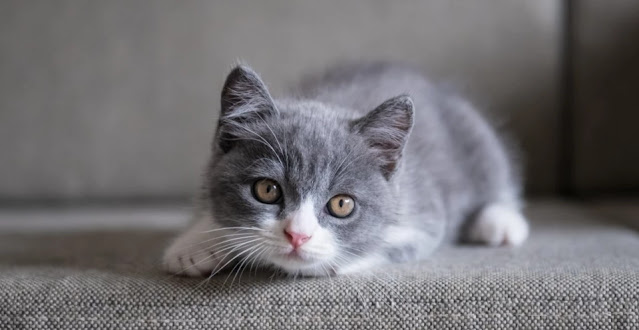how many human days is a cat day?
A cat’s first year is roughly equivalent to 15 human years, and its second year is roughly equivalent to nine more human years. After that, each additional year of a cat’s life is roughly equivalent to four human years. For example, a cat that is three years old is roughly equivalent to 28 human years.
The American Animal Hospital Association (AAHA), the Feline Advisory Bureau (now known as International Cat Care), and the American Association of Feline Practitioners (AAFP) all agree on these age guidelines. Cats mature quickly in their first couple of years, so converting cat years to human years is not as simple as using a factor of 7.
A cat’s lifespan can vary based on its breed, genetics, nutrition, lifestyle, and preventative measures. According to PetMD, the average lifespan of a cat is 13 to 17 human years, and 20 years is considered very old.
How long is a cat day
Have you ever wondered how time works for our feline friends? Cats have a unique way of experiencing time that is different from humans. In order to understand their world better, it’s important to know how many human days are equivalent to a cat day. Let’s dive into the fascinating concept of cat time and explore the conversion between cat and human days.
Cat day vs human day
Their activity is divided into short bursts of intense energy followed by periods of rest and relaxation. This is why you might see your cat suddenly darting around the house at full speed and then settling down for a nap shortly after. Their bursts of energy are similar to our own bursts of productivity, but their rest periods are much longer.
Cat time conversion
Now that we have an understanding of a cat’s daily routine, let’s tackle the conversion between cat days and human days. While it’s impossible to precisely measure a cat day in terms of human time, there are a few methods we can use to estimate the equivalent.
One popular method is the 1:7 ratio, which suggests that one cat day is equivalent to one week (7 human days). This conversion is based on the average lifespan of a cat compared to a human. Since cats generally live around 15 years and humans live around 75 years, the ratio is derived from this difference.
However, it’s important to note that this method is not scientifically proven and is simply an approximation. Cats age much more rapidly than humans during their first year of life, so the 1:7 ratio might not be accurate for that period. Additionally, factors such as breed, size, and overall health can also influence a cat’s aging process.
Comparing cat and human days
While we can’t determine the exact length of a cat day in human terms, we can compare certain aspects of cat and human days to get a better understanding of their differences.
Firstly, cats have a much higher metabolic rate than humans. Their bodies are designed for hunting and survival, which requires them to conserve energy during periods of rest and quickly expend energy during bursts of activity. This is why cats sleep for a significant portion of the day and are incredibly agile and quick when they are awake.
Secondly, cats experience time differently due to their different sensory perception. They have a heightened sense of hearing and are able to perceive movements that are imperceptible to humans. This allows them to react quickly and accurately to their surroundings.
Thirdly, cats have a strong internal clock, which allows them to anticipate events and stick to a routine. They know when it’s time to eat, play, and sleep, and they will often remind you of their schedule. This internal clock is influenced by factors such as light and temperature, but it also has a genetic component.
Cat time measurement
While the concept of measuring time in cat days may not be precise, there are certain indicators we can look out for to understand their daily rhythm.
One way to measure a cat’s time is by observing their sleep-wake cycle. As mentioned earlier, cats sleep for around 15 hours a day, so you can track their patterns of rest and activity to get an idea of their internal clock.
Another way is to observe their behavior during different parts of the day. Cats are most active during dawn and dusk, so you might notice them being more alert and playful during these times. They are also more likely to engage in hunting behaviors during these periods.
Understanding cat days
It’s important to remember that cats have their own unique way of experiencing time. While we may be focused on hours and minutes, cats are more concerned with their immediate needs and instincts. Their internal clock guides them through their daily routine, and they have a natural ability to adapt to different environments.
By understanding how time works for cats, we can better provide for their needs and create a stimulating and fulfilling environment for them. Whether it’s setting up playtime during their active hours or providing a cozy spot for their long naps, accommodating their natural rhythm is essential for their overall well-being.
Cat day measurement
While it’s difficult to measure a cat day in exact human terms, it’s fascinating to explore the concept of cat time and the factors that influence their daily routine. By observing their behavior, sleep patterns, and natural instincts, we can gain a deeper understanding of our feline companions.
Remember, cats are unique creatures with their own sense of time. While we may not be able to calculate their days in human terms, we can appreciate and respect their individuality. So next time you see your cat enjoying a long nap or zooming around the house, take a moment to appreciate their special perception of time.
Understanding cat time
Cats have captivated humans for centuries with their mysterious behavior and independent nature. One aspect of their lives that continues to fascinate us is their perception of time. While we may never fully comprehend how time works for cats, exploring the concept opens up a world of understanding and appreciation for these amazing creatures.
While a cat day may not be easily quantifiable in human terms, that doesn’t make it any less significant. Cats experience time in their own unique way, and by observing their behaviors and routines, we can get a glimpse into their world.
Conclusion
While we may never know exactly how long a cat day is in human terms, it’s clear that cats have their own rhythm and perception of time. Understanding their daily routine, sleep patterns, and behaviors can help us create an environment that caters to their natural instincts and needs. So the next time you interact with your feline friend, take a moment to appreciate their timeless sense of being.













